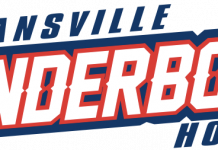SPOTLIGHT ON LAVENDAR TIMMONS OF EVANSVILLE RECOVERY ALLIANCEÂ
By Michael L. Smith, Jr.
Community News Writer For The City-County Observer
Heroism is defined in the Oxford dictionary as “great braveryâ€, and this weekly series of interviews aims to find Evansville locals making a positive impact on the community through that bravery, to shine a light on their amazing contributions.
This week I had the opportunity to speak with Lavender Timmons, one of the co-founders of the non-profit Evansville Recovery Alliance, about both her organization and a topic near to her heart. One that affects not only our local community but also communities all over the United States: the Opioid Epidemic.
QUESTION: Tell Us About Yourself And Your Organization
My name is Lavender Timmons, I’m an Evansville native though I’ve traveled quite a bit and I’ve just come back home within the last four years. I’m the director and co-founder of Evansville Recovery Alliance. Within this last four years, we have started a grassroots non-profit organization, and we are officially 501©(3) so we do give tax exemption for donations.
We are a group of people who have direct experience with substance use, substance use disorder, recovery, and loss. Not everyone is in recovery, we don’t require that everyone have direct experience, but we do prioritize those that do so that the way we are operating and the way that we are speaking about substance use is under the guidance of those with direct experience. Direct representation is important so that we are not speaking out of term or from a place of non-experience. We are a group of volunteers, and we are certified by the National Harm Reduction Coalition to train and educate folks on harm reduction, safer consumption, and overdose reversal. We also distribute free Narcan, free safe use kits, and supplies for safe sex kits including Plan B to all of Vanderburgh County.Â
QUESTION: Is Your Organization A Branch Of The Indiana Recovery Alliance?
Yes, I personally, as well as the other directors and co-founders, trained with the Indiana Recovery Alliance. That was where I came into it. I had lost people from overdoses throughout my life, but I didn’t understand the extent of work that the IRA was doing and how it was impacting things at the time, as well as how parallel we were when it came to finding different ways of delivering mutual aid to the community. IRA started around 10 years ago, and I have trained about 4 years ago. They’re our comrades, that’s where we get a lot of our supplies from, and a lot of our branding stays the same.
There is a National Harm Reduction movement, there’s a Chicago Recovery Alliance as well, there are ones trying to start in Tennessee and Ohio, all trying to stay on the same page and support each other. A lot of the information focuses on incarceration, decriminalization, and destigmatization, so it is important that whenever we are offering these services that one, it stays with people of direct experience, and two, it doesn’t just become a social government-controlled service, that stays grassroots and as direct to the people as possible.
QUESTION: How Has The Pandemic Impacted You And Your Organization?
The Covid-19 pandemic seems to mirror a lot of what people with substance use disorder already deal with on a regular basis: fear of contraction, fear of a loss of resources, isolation, losing jobs, losing housing, losing community. It’s not a good thing that people are experiencing these issues now due to Covid, but it has made folks more able to relate to people with substance use disorder and the struggles they face.
Also, in previous years of our outreach, we saw local overdose rates and disease transmission decrease with access to Narcan and harm reduction awareness. During the pandemic, national and local overdose rates have increased. We believe this is evidence that the factors of the pandemic and loss of resources is driving folks to self-medicate more dangerously.
We also haven’t trained publicly since Covid started. Rates of transmission have gone up, and as an organization focused on harm reduction, we don’t want to encourage people to do anything that may likely cause them harm. So that’s the only thing that has really changed internally, our operation shifted more to a delivery-based, 1-on-1 operation. It’s daily, it can be hard to keep up with at times, and we are volunteers, but we do try to get to as many people as possible. Â
We also realized that many times the government isn’t prepared for these situations, or they are slow to act, and those that are prepared to act are your neighbors and the people we already have relationships with. So, we are trying to build more energy towards community organizations, and because of COVID, I think that is something more people are starting to think about.
QUESTION: What Motivates You To Continue Your Good Work?
So, daily there is someone being saved by Narcan, or someone is requesting Narcan. Even if I don’t check the local or national news, I still hear about the Opioid Crisis through word of mouth, that people are overdosing on my street, in my neighborhood, in my city still. It is still affecting lives daily. The need, and people actively seeking it out. Knowing that people are accessing these resources proves that it is worthwhile. I believe it needs to remain free and in the hands of the people who it directly impacts.
QUESTION: Why Should The Community Care About The Issues That You’re Addressing?
It’s very relatable, unfortunately. I think within three degrees of separation anyone can find someone in their lives dealing with substance use disorder or someone that is in recovery, or, unfortunately, someone who has passed. And if they don’t think they know anyone affected by these issues, I think they’re wrong.Â
Fortunately, the science and the language are changing, the way we are framing addiction and how effective it is, what qualifies as addiction, and the way we categorize the different levels of addiction is changing. And again, the more destigmatized we are, the more information we are receiving from people being affected by substance use disorder, and the more information we gather the more we can help the community.Â
The community is already being affected by the Opioid Crisis, so the reason they should care is this is one of the surefire ways they can help, by carrying Narcan and becoming more educated. Being more willing to talk about substance use disorder, especially generationally. Talk about the issues with your parents and your children. Be open to the reality that a person with substance use disorder might not be ready for recovery, and it’s important to accept them and meet them where they are.Â
QUESTION: Does Narcan Comes In The Form Of A Nasal Spray?
Yep, that’s right. So, right now we have both. We have the intramuscular type, the one that comes with a needle, but we also supply the nasal spray. People very much prefer the nasal type because it is less invasive and very similar to allergy medication on the market. It was made to be easy to use, specifically for that reason, to lessen the barriers that people might feel prevent them from carrying Narcan. The nasal spray can be administered by just placing the tip of the device into the nasal passage and pressing the red plunger down with your thumb. It sends the Narcan into the cranial cavity and it focuses on opioids that are in the system.
QUESTION: Is NARCAN Only Targeting Opioid Receptors And Are There Any Known Side Effects?
Correct, so Narcan is what first responders give to people that are unconscious, even if they aren’t sure what substances are in their system. Narcan is used in hospitals and emergency rooms. They even sometimes use it when women deliver babies, to sort of subdue some of the narcotics they’ve given to address the pain. Again, Narcan only interacts with opioids, the opioid receptors, it does not react to anything else. It is used so widely because if someone is overdosing from substance use, even if they think they know what that substance is, often it is off the streets and maybe cut with something. We are hearing a lot about Xanax being cut with Fentanyl. So, even if someone doesn’t think they are taking an Opioid, they may be wrong.Â
There are no known side effects of Narcan, though people sometimes report headaches, dizziness, or maybe aggression, those are all symptoms of withdrawal. If anyone does have to have Narcan administered to them, we do recommend they still go to the hospital to be seen, even if just to restore their fluids and give themselves a moment for someone to monitor their heart rate. Narcan does wear off after around sixty minutes, so if there are still opioids flooding the system, a person can overdose again. In which case they would need an additional dose of Narcan.
QUESTION: What Can Our Community Do To Support Evansville Recovery Alliance?
It might sound silly but please like and follow our Facebook, it is one of the main ways people prefer to get ahold of us. We also have videos up that help to educate folks as comprehensively and as easily as possible. So, the information is easy to understand and easy to share. We offer virtual training, and virtual therapy groups as well. They can learn about Narcan, learn about substance use disorder, learn about generational trauma. Avoid stereotyping, avoid stigmatizing, because that’s shown to not be helping. Carry Narcan, and you can get ahold of us if you want to carry it. Be vigilant about legislation and try to make your voices heard to bureaucrats and politicians, keep chipping away. The more pressure they have on them to get your votes for reelection, the more support we can get behind these health services that we desperately need. Donate if you want, and volunteer if you have the time.
FOOTNOTE: Lavender Timmons is an Evansville native Certified in harm reduction by the National Harm Reduction Coalition. She has spent the last four years working and training alongside the Indiana Recovery Alliance and is one of the co-founders of Evansville Recovery Alliance.
If you or anyone you know is struggling with substance use disorder and need access to Narcan, you can contact Evansville Recovery Alliance through their Facebook at https://www.facebook.com/evvrecoveryalliance/
Michael L. Smith, Jr is a “Community News Writer” for The City-County Observer and is currently completing classes at Ivy Tech Community College in pursuit of a Bachelor of Arts degree in Journalism.Â
Next week’s “Community Profile” article will be with Courtney Johnson, the founder of the non-profit organization Young&Established.Â
If you know someone who deserves to have a spotlight shined on their contributions to the community, please email the author at msmith1221@ivytech.edu




